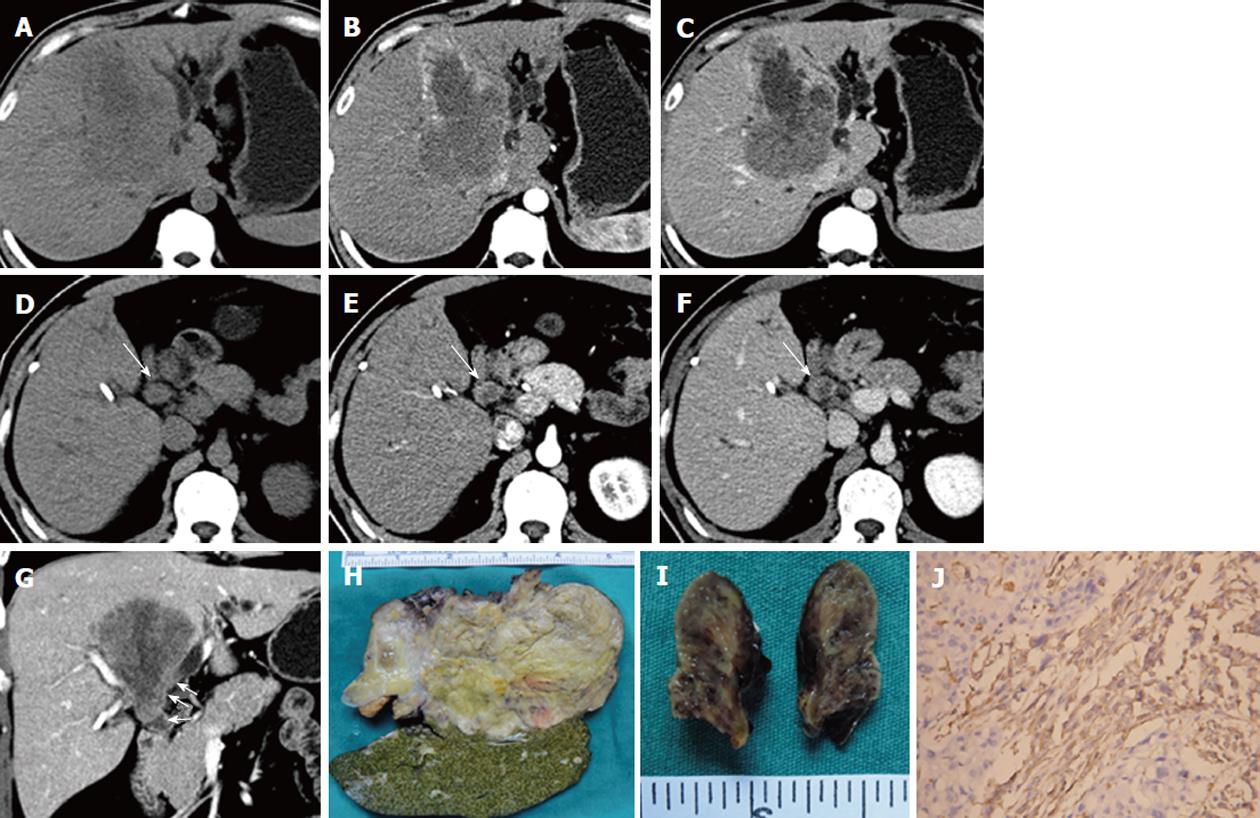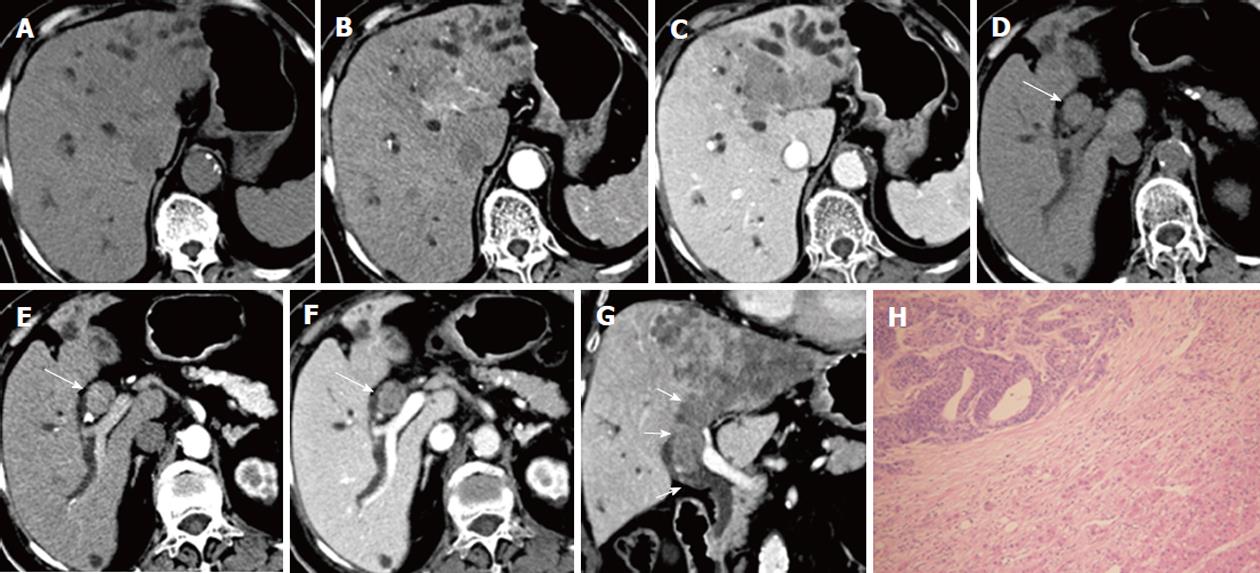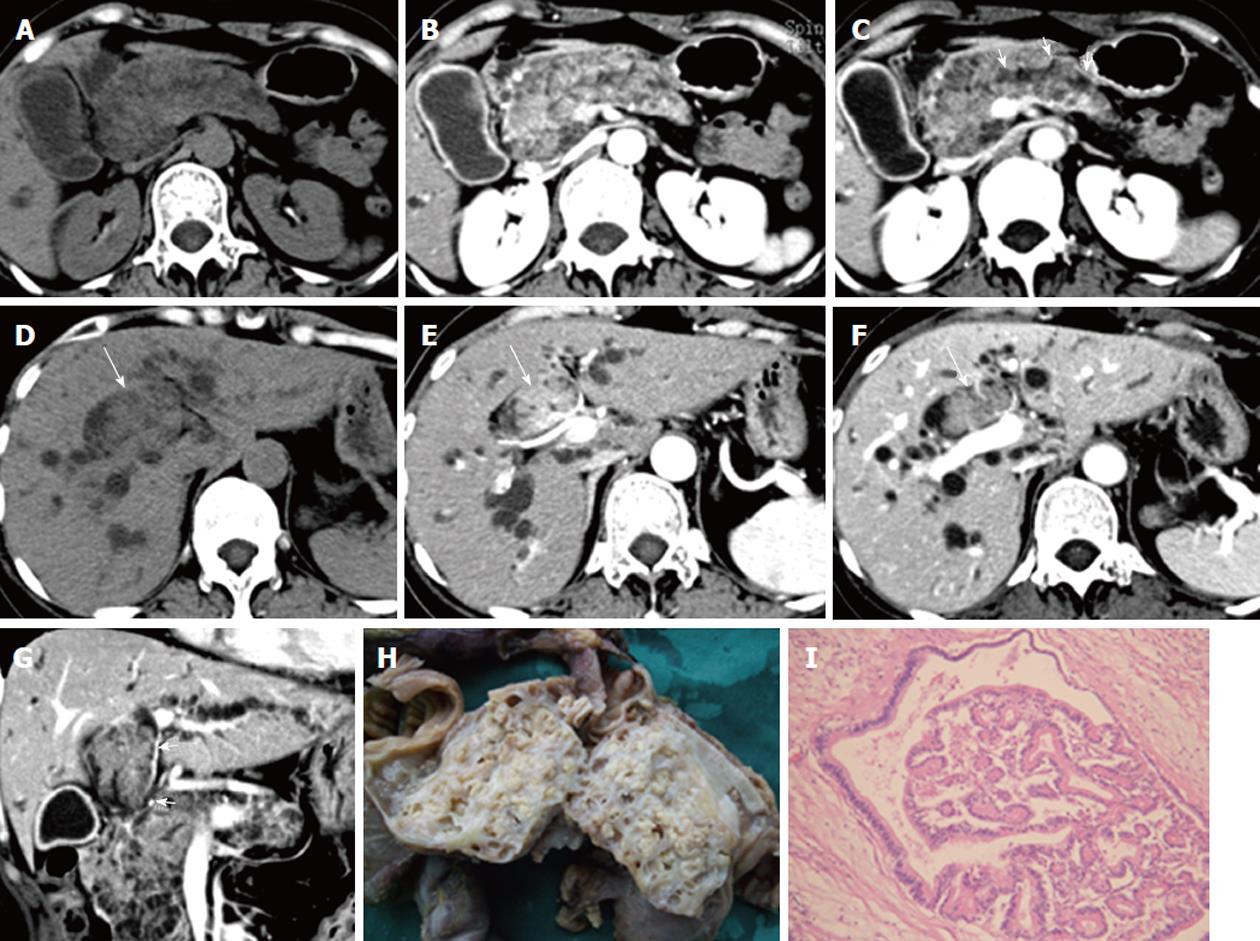Copyright
©2012 Baishideng Publishing Group Co.
World J Gastroenterol. Mar 21, 2012; 18(11): 1273-1278
Published online Mar 21, 2012. doi: 10.3748/wjg.v18.i11.1273
Published online Mar 21, 2012. doi: 10.3748/wjg.v18.i11.1273
Figure 1 A 41-year-old man with primary hepatic carcinosarcoma.
A large hypodense tumor in the hepatic middle lobe appears on precontrast computed tomography (CT) scan (A), which shows early rim enhancement in the hepatic artery phase (B) and a low density in the portal phase with large areas of necrosis (C). The bile duct tumor thrombus (BDTT) (arrow) shows similar enhancement patterns with the intrahepatic tumor on pre-contrast CT scan (D), hepatic artery phase (E) and portal phase scan (F). Coronal reconstruction image in the portal phase shows that BDTT (arrows) is contiguous with the intrahepatic tumor (G). The resected hepatic tumor (H) and BDTT (I) specimens. The sarcomatous component of the primary hepatic carcinosarcoma is vimentin positive on the immunohistochemical staining (J), × 200.
Figure 2 A 75-year-old woman with liver metastasis from colon cancer.
A lobulated, ill-defined hypodense tumor in the left hepatic lobe is noted on pre-contrast computed tomography (CT) scans (A), which shows early enhancement in the hepatic artery phase (B) and a low density in the portal phase (C). The bile duct tumor thrombus (BDTT) (arrow) shows similar enhancement patterns with the intrahepatic tumor on precontrast CT scan (D), hepatic artery phase (E) and portal phase scan (F). The coronal reconstruction image in the portal phase shows that BDTT (arrows) is contiguous with the intrahepatic tumor (G). Intraductal tumor thrombus is proved to be metastatic adenocarcinoma pathologically (H), hematoxylin and eosin stain, × 100.
Figure 3 A 43-year-old woman with intraductal oncocytic papillary neoplasm of the pancreas.
An inhomogeneous hypodense tumor involving the entire pancreas is noted on precontrast computed tomography (CT) scan (A), which shows early enhancement in the hepatic artery phase (B) and a low density in the portal phase with mild dilation of the pancreatic duct (arrows) and multilocular changes (C). The bile duct tumor thrombus (BDTT) (arrow) shows similar enhancement patterns with the pancreatic tumor on precontrast CT scans (D), hepatic artery phase (E) and portal phase scan (F). The coronal reconstruction image in the portal phase shows that BDTT (arrows) is contiguous with the pancreatic tumor (G). Resected pancreatic tumor specimen shows multilocular changes with papillary growth in the loculi (H). Pancreatic tumor is proved to be intraductal oncocytic papillary neoplasm pathologically (I), hematoxylin and eosin stain, × 100.
- Citation: Liu QY, Lin XF, Li HG, Gao M, Zhang WD. Tumors with macroscopic bile duct thrombi in non-HCC patients: Dynamic multi-phase MSCT findings. World J Gastroenterol 2012; 18(11): 1273-1278
- URL: https://www.wjgnet.com/1007-9327/full/v18/i11/1273.htm
- DOI: https://dx.doi.org/10.3748/wjg.v18.i11.1273















